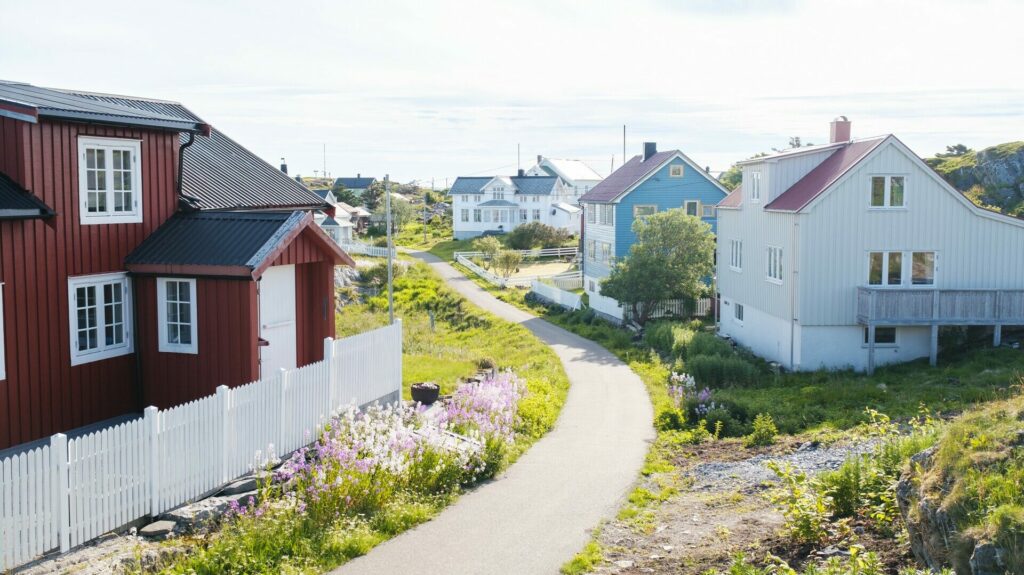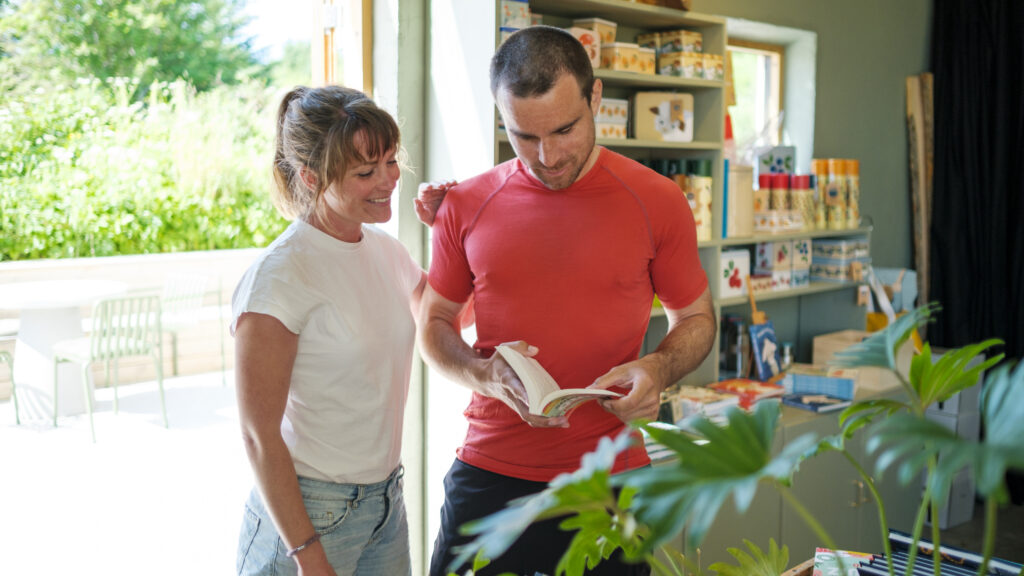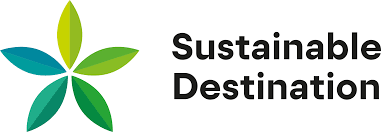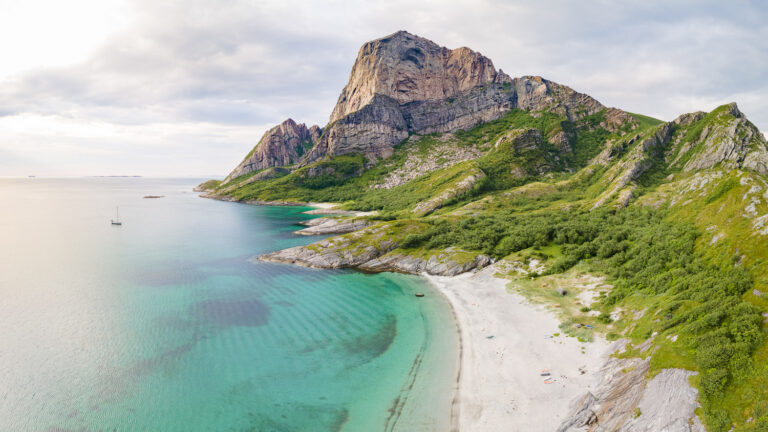Our Sustainability Work
Tourism and travel in Helgeland bring many positive effects, creating opportunities and jobs in vibrant local communities. We strive to maintain and strengthen these benefits. However, we’re aware that increased tourism can lead to higher carbon emissions and more wear and tear in certain areas. We’re actively working to minimize these negative impacts. Read on to learn how we do this.
Tourism and regenerative travel
By reinforcing the positive social and economic effects of tourism, we create what’s known as “regenerative tourism”—an approach that keeps doors open and lights glowing in the windows. It brings new life to old buildings and new activity to old workspaces.
In this way, tourism not only helps preserve the places people visit—it also helps improve and reinvent them. That’s what we mean by the shared value of tourism. It doesn’t land on just one business, and it doesn’t lift only one boat. It spreads through the whole community, helping create great places to live—and great places to visit. Because a good place to visit is also a good place to live.

Regular quality assurance from local communities
At Visit Helgeland, we work with 18 municipalities in an area larger than several of Norway’s counties. This region is home to many large and small communities, national parks and conservation areas, popular attractions and “hidden gems”. Therefore, we frequently engage and visit with these communities to understand their experiences with the tourism in their area.
 Kristoffer Møllevik / Visit Helgeland
Kristoffer Møllevik / Visit Helgeland
Key questions we ask include where they want to direct tourists, when they prefer visitors, what types of tourists are most suitable and beneficial, and if there are places where they’d rather not have too many tourists. In short, we aim to determine how to get the the right guests for the right place at the right time, and how to best work towards that goal.
Here you can see an example of how this work translates into practical information on our website.
Responsible marketing
Our marketing, in terms of messaging and imagery, aims to set accurate expectations for the tourists we wish to attract. This applies to both the expectations tourists have of the destination and the expectations of how we want tourists to behave when they are here.
 Kristoffer Møllevik / Visit Helgeland
Kristoffer Møllevik / Visit Helgeland
This means, among other things, that the images we use should be realistic, and they should not be manipulated or excessively processed. It also means that we do not show people behaving in ways we do not endorse, for example, by not using proper safety equipment or engaging in unacceptably risky behavior, such as being near the edges of glaciers or traversing snow cornices in the mountains. It also involves setting the right expectations for what is required for various tours and activities, and where appropriate, we refer to useful safety information from UT.no, Varsom.no, and similar entities.
You can see examples of this in tour descriptions like this one
Additionally, we have a digital “pocket guide” on many of our web pages, outlining simple guidelines we hope tourists will follow.
Thank you for respecting the local communities, and for helping us preserve the natural beauty of Helgeland!
Please:
- Strive to leave no trace of your visit. Bring back all your rubbish, including used toilet paper, and discard it in the nearest rubbish bin.
- Plan your toilet visits and use the opportunity when you pass a toilet. In the wilderness, make sure you are not a nuisance to others.
- Respect the local wildlife. Keep a good distance from wildlife, livestock and birds. Keep your dog leashed.
- Respect private property. Keep a respectful distance from houses and cabins.
- Show good boating sense. Keep a good distance from shore and drive at a low speed, especially when you are close to anyone or anything on the water, including birds or animals. Avoid loud and disturbing engine noise. Be aware that some islands and nature reserves are important nesting sites, and that going ashore is prohibited during the nesting season.
- Follow the Norwegian Mountain Code (Fjellvettreglene). Plan your excursion according to the weather forecast, your skills and experience.
- Join a guided excursion or consider hiring an experienced guide, especially when you don’t have sufficient experience or knowledge to guarantee a safe trip.
Strengthening and developing the tourism industry
Economic viability or profitability is alsp an important aspect of sustainability. We collaborate with the tourism industry to develop products and routes, extend the high season, and generate activity and income in new seasons. Our goal is for as many as possible to have a solid economic foundation to work in tourism year-round. This helps distribute the workload in the tourism industry, which can be intense during peak seasons.
Sustainable destination
Sustainable Destination is a label for destinations committed to systematically working to reduce the negative impact of tourism. To qualify, destinations must go through a certification process and also document progress in sustainable development every three years. The label is administered by Innovation Norway.
 Innovasjon Norge
Innovasjon Norge
As of December 2023, 9 out of 18 municipalities in Helgeland are engaged in projects to become certified as sustainable destinations. Our ambition is that all the municipalities will be labeled, and we offer project management to those municipalities that want our help with such a process.
Eco-Lighthouse
Visit Helgeland was certified as an Eco-Lighthouse in 2020 as part of our commitment to contributing to sustainable tourism and reducing our own environmental footprint.
Through the Eco-Lighthouse certification, we commit ourselves to implementing environmentally friendly solutions in our business operations and reducing our carbon footprint. At the same time, it is an important part of our work to promote environmentally conscious choices and solutions among our partners and the tourists who visit Helgeland. In this way, the tourism industry in Helgeland will contribute to preserving the region’s natural wealth for future generations.
You can see Visit Helgeland’s development as an Eco-Lighthouse here
You can find more information about Eco-Lighthouse here
If you have any questions about our sustainability work, feel free to email us at post@visithelgeland.com.

